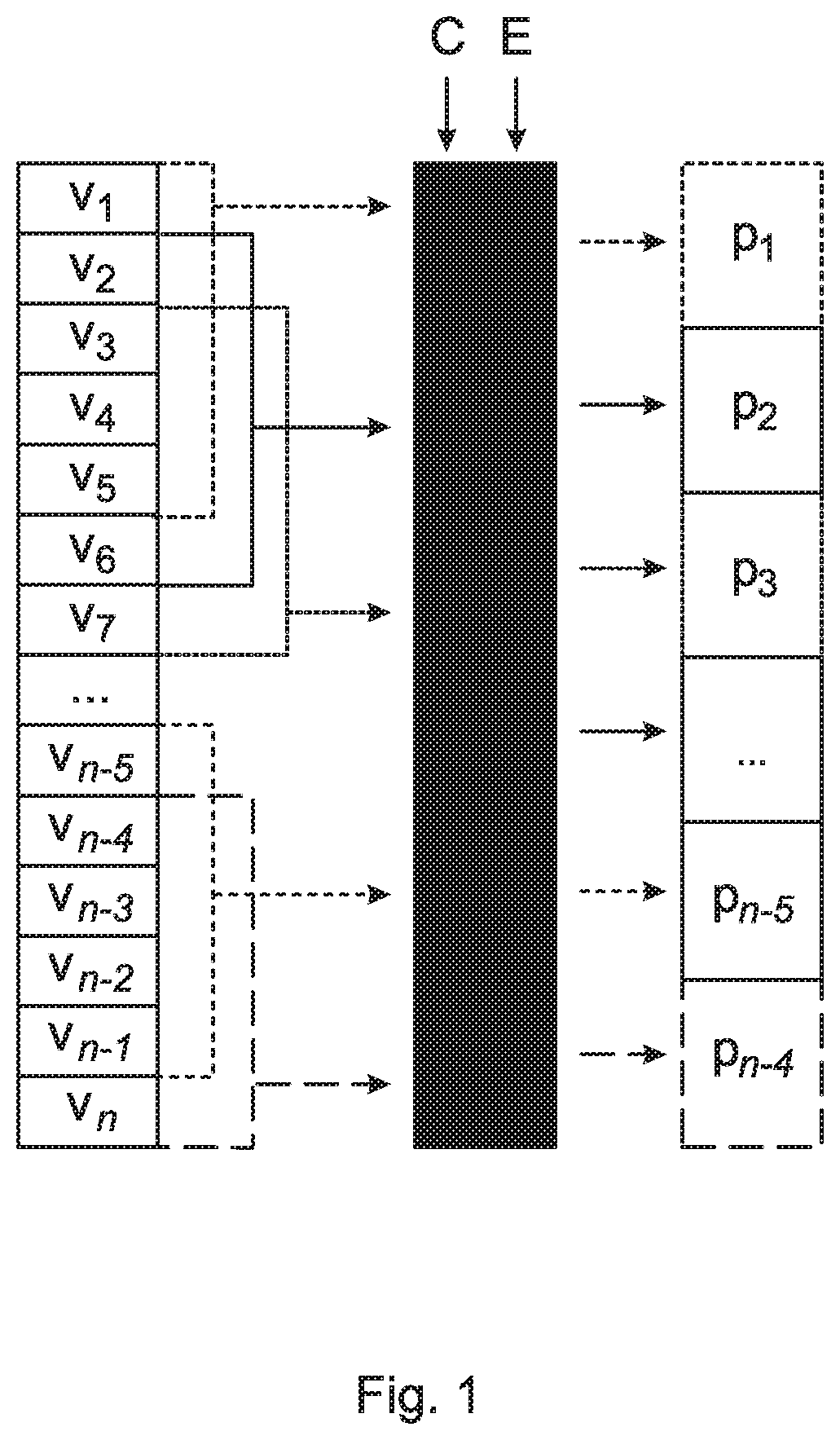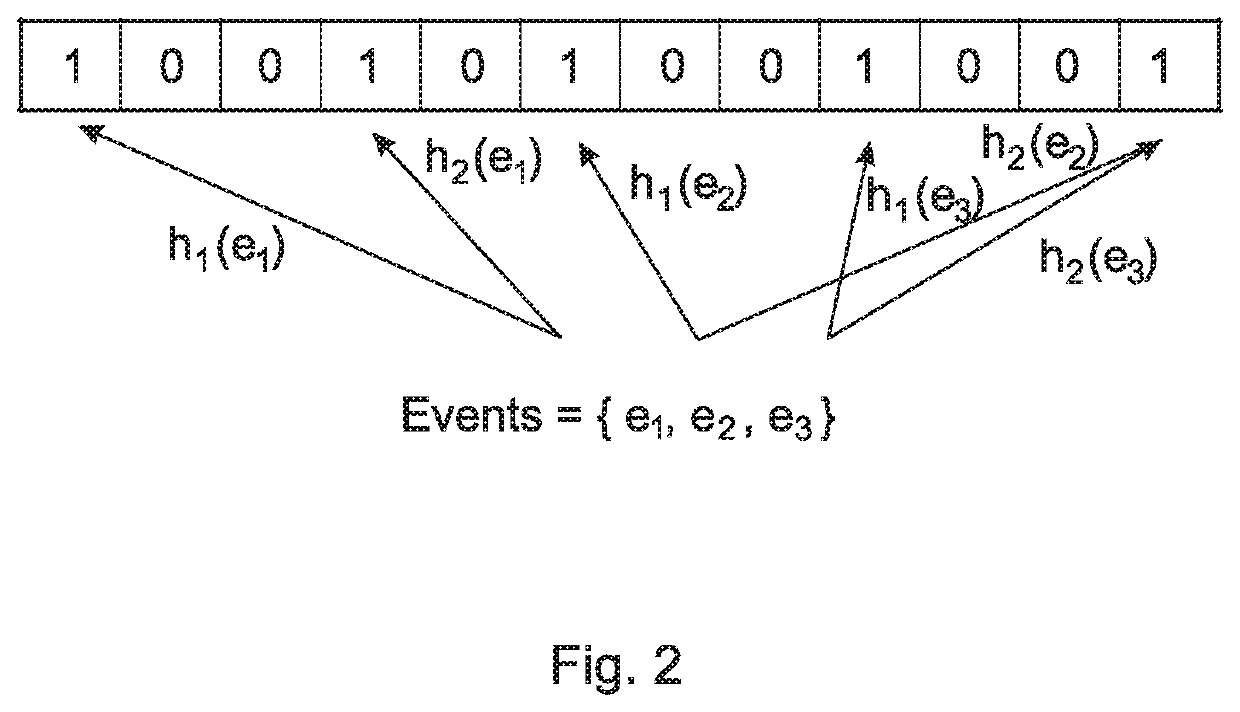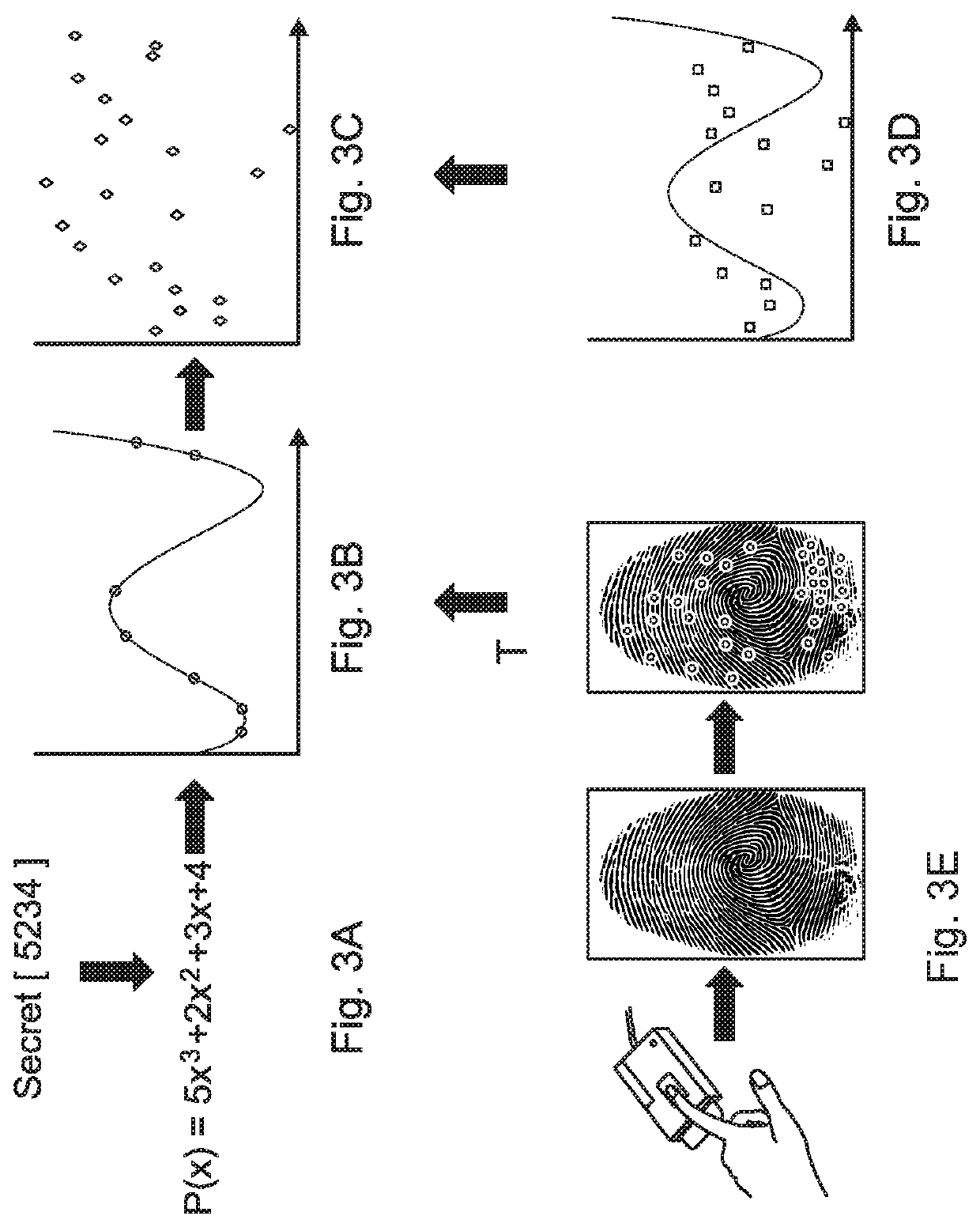Method for protecting biometric templates, and a system and method for verifying a speaker's identity
a biometric and speaker technology, applied in the field of biometric templates and system and method for verifying the identity of speakers, can solve the problems of inability to replace personal data, the use of biometrics for recognising people, and the inability to protect personal data, etc., and achieve the effect of low accuracy
- Summary
- Abstract
- Description
- Claims
- Application Information
AI Technical Summary
Benefits of technology
Problems solved by technology
Method used
Image
Examples
Embodiment Construction
[0063]We will now describe a biometric template protection method according to the invention, called PolyProtect, for securing biometric templates represented as real-number vectors. The method could be used for protecting voice biometric templates, or any kind of biometric templates that can be represented by real-number vectors V.
[0064]An original biometric template can be represented by an n-dimensional real-number vector V=[v1, v2, . . . , vn]. An aim is to map this vector V to another vector, P, where P is the protected version of V. The proposed PolyProtect method is used to achieve this mapping.
[0065]This is achieved by mapping overlapping sets of consecutive elements from V to single elements in P via multivariate polynomials defined by a set of user-specific coefficients and exponents.
[0066]Let C=[c1, c2, . . . , cm] represent a set of m ordered integer coefficients and E=[e1, e_2, . . . , em] a set of m unique, ordered integer exponents, where 1
PUM
 Login to View More
Login to View More Abstract
Description
Claims
Application Information
 Login to View More
Login to View More - R&D
- Intellectual Property
- Life Sciences
- Materials
- Tech Scout
- Unparalleled Data Quality
- Higher Quality Content
- 60% Fewer Hallucinations
Browse by: Latest US Patents, China's latest patents, Technical Efficacy Thesaurus, Application Domain, Technology Topic, Popular Technical Reports.
© 2025 PatSnap. All rights reserved.Legal|Privacy policy|Modern Slavery Act Transparency Statement|Sitemap|About US| Contact US: help@patsnap.com



